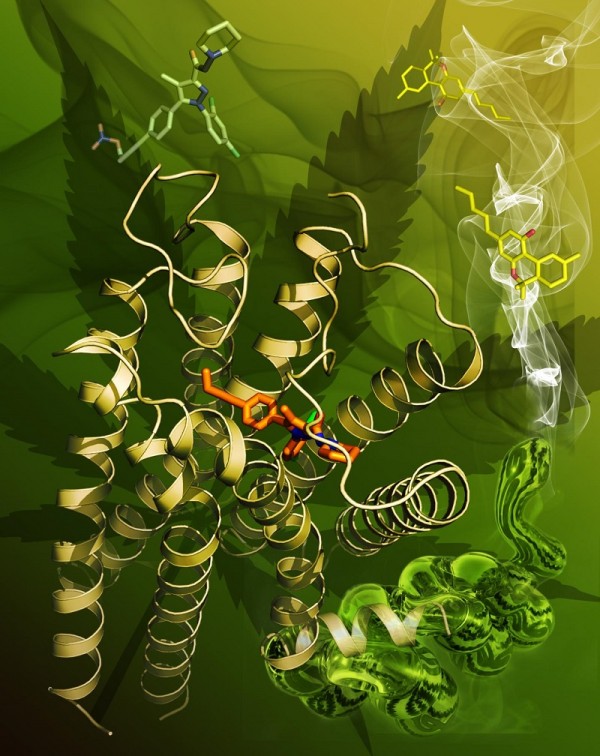
New research is providing a more detailed view into the structure of the human cannabinoid (CB1) receptor. These findings provide key insights into how natural and synthetic cannabinoids including tetrahydrocannabinol (THC)--a primary chemical in marijuana--bind at the CB1 receptor to produce their effects. The research was funded by the National Institute on Drug Abuse (NIDA), part of the National Institutes of Health.
There is considerable interest in the possible therapeutic uses of marijuana and its constituent cannabinoid compounds. Molecules that target CB1 receptors may have promise in treating a variety of conditions such as pain, inflammation, obesity, nerve cell diseases, and substance use disorders. However, some synthetic cannabinoids such as K2 or Spice can produce severe and even deadly reactions, whereas other cannabinoids produce less serious side effects.
"Cannabinoids can produce very different outcomes, depending on how they bind to the CB1 receptor," said NIDA Director Nora D. Volkow, M.D. "Understanding how these chemicals bind to the CB1 receptor will help guide the design of new medications and provide insight into the therapeutic promise of the body's cannabinoid system."
Researchers used a specific chemical, AM6538, to inactivate and crystallize the CB1 receptor. They then computed the three-dimensional structure of the CB1-AM6538 complex through crystallography, which determines molecular shape by measuring the angles and intensities of x-rays that are bounced off a crystal structure. Based upon prior evidence showing how specific cannabinoids attach to different chemical configurations, researchers were able predict how these cannabinoids would fit into the three-dimensional CB1 model. The model was also used to calculate how long each cannabinoid bound to the CB1 receptor, thereby providing clues into mechanisms whereby some chemicals produce longer-lasting effects.
"We found that the CB1 receptor consists of multiple sub-pockets and channels," said Alexandros Makriyannis, Ph.D., director of the Center for Drug Discovery, Northeastern University in Boston, and a co-author on the paper. "This complex structure will allow chemists to design diverse compounds that specifically target portions of the receptor to produce desired effects."
The paper by Hua, et al., can be found at http://www.cell.com/cell/abstract/S0092-8674(16)31385-X

